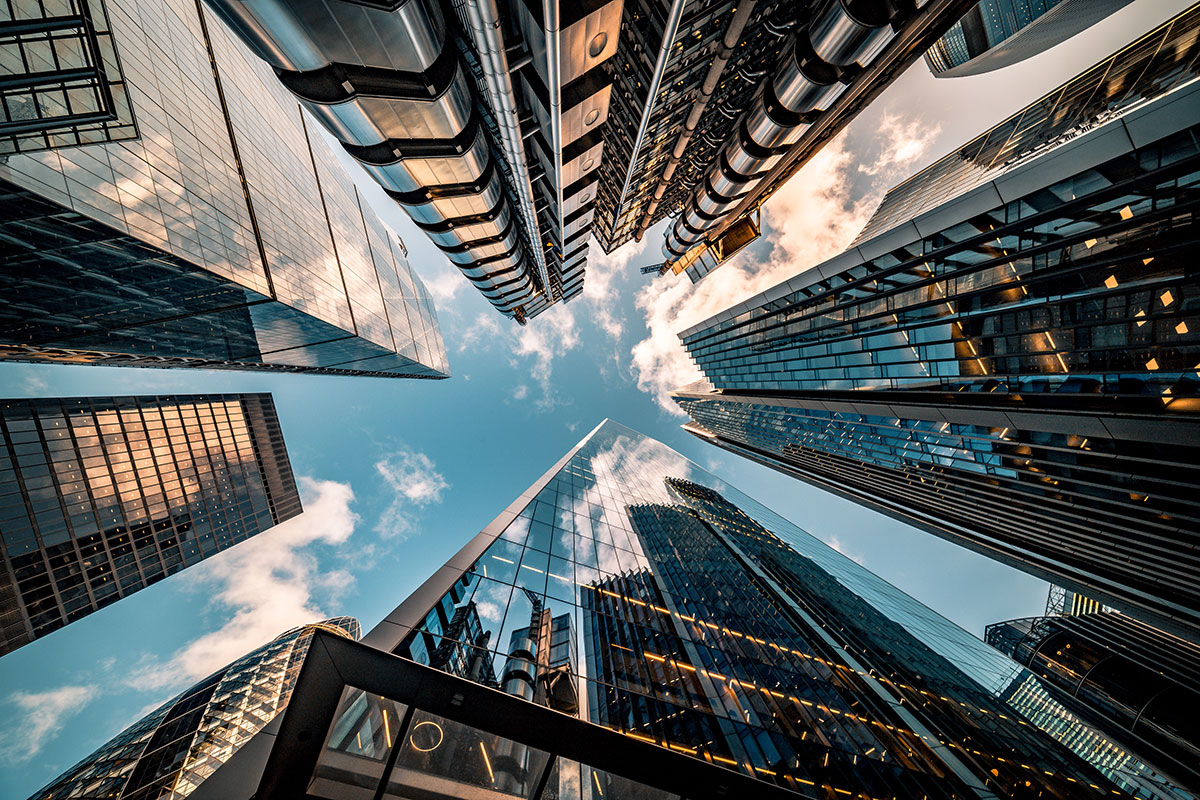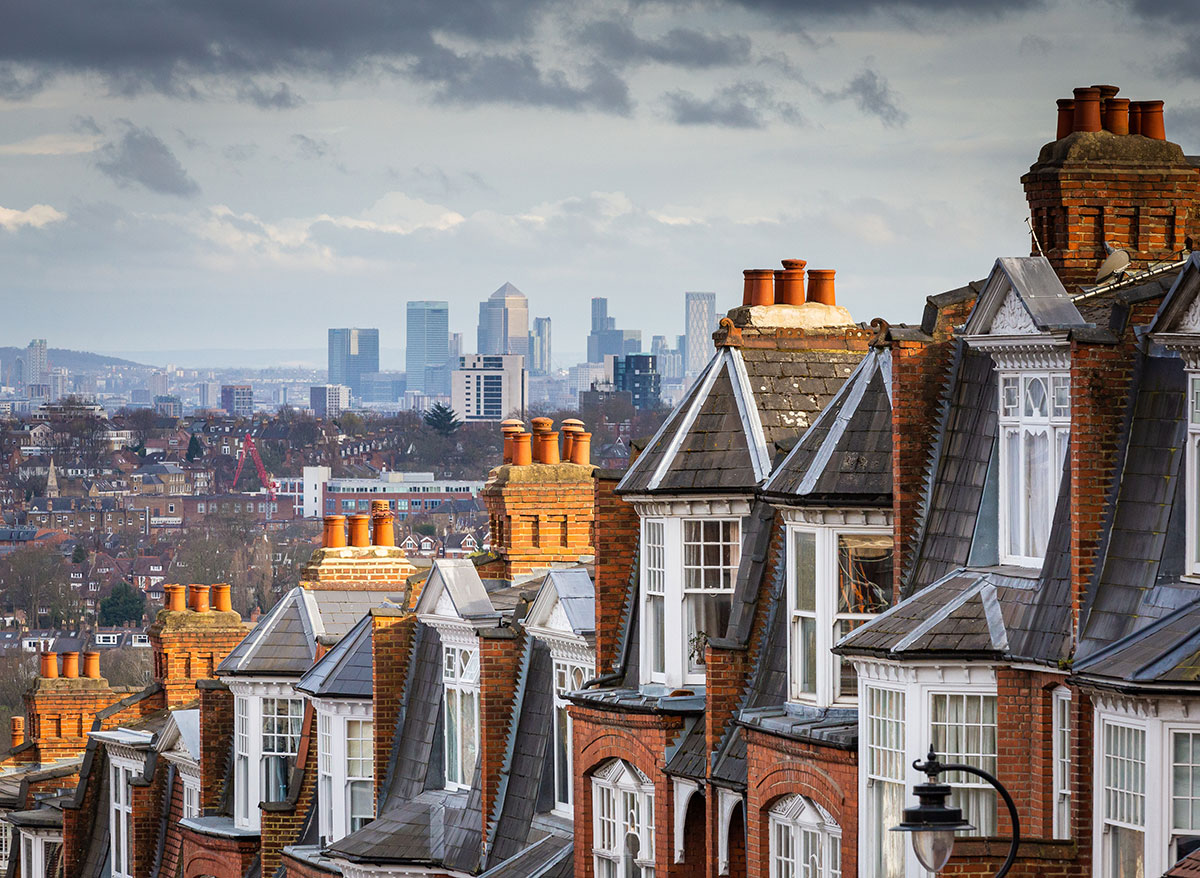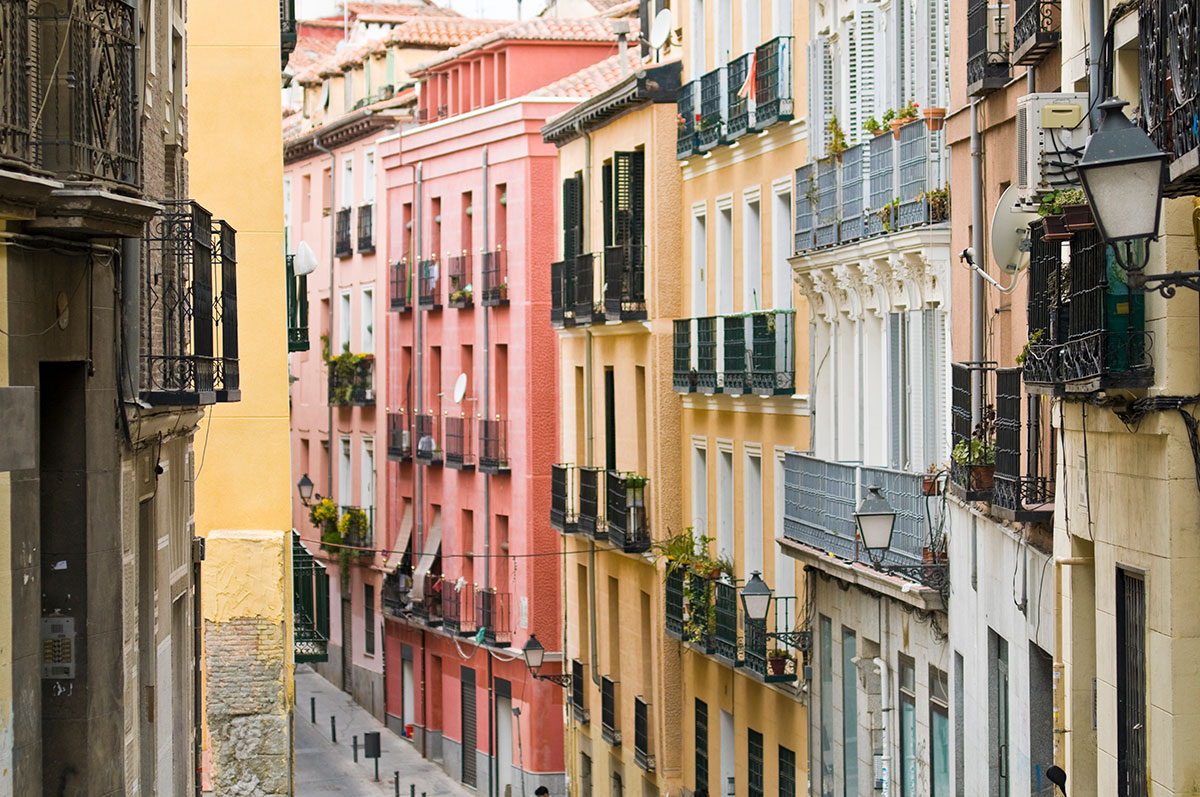Top Modern Architecture Europe: Must-See Buildings and Landmarks

Arqsix
October 22nd, 2024

Modern architecture in Europe offers a striking evolution from traditional styles, featuring innovative designs and sustainable approaches. This article takes you on a tour of Europe’s must-see modern architecture Europe buildings and landmarks, from Scandinavia’s green urban plans to the avant-garde structures in France. Explore how visionary architects have reshaped the continent’s skyline, transitioning from classical architecture to the ornate Art Deco style, and what makes these architectural marvels stand out.
Introduction to Modern Architecture in Europe
Modern architecture in Europe has a rich and diverse history, spanning over a century. From the early modernist movements of the 1900s to the contemporary styles of today, European architecture has been shaped by a wide range of influences, including technological advancements, social changes, and artistic movements. This introduction will provide an overview of the key developments and styles that have defined modern architecture in Europe.
Exploring Modern Architecture in Europe
 Image by Nikolay Pandev, iStock
Image by Nikolay Pandev, iStock
Modern architecture in Europe stands as a compelling narrative of transformation and innovation. It introduces stark contrasts with historical styles, often leading to vibrant debates about preserving the character of European cities while embracing new forms and materials. The essence of modern architecture lies in its innovative shapes, eco-friendly materials, and functional designs, all underpinned by the principle that form follows function.
The journey through Europe’s modern architectural marvels begins in Scandinavia, where sustainable design and modern urban living harmonize beautifully. From there, we’ll traverse the Dutch landscape, where cities like Rotterdam and Amsterdam showcase groundbreaking designs.
The tour continues to the UK, highlighting London’s fusion of contemporary and classical elements. The tour concludes with France’s avant-garde structures, epitomized by the Musée des Confluences in Lyon.
Early Modernism in Europe (1900-1914)
The early 20th century saw the emergence of modernist architecture in Europe, characterized by a rejection of traditional styles and a focus on functionality, simplicity, and innovation. Architects such as Walter Gropius, Ludwig Mies van der Rohe, and Le Corbusier were instrumental in shaping the modernist movement, which emphasized the use of new materials and technologies, such as steel, concrete, and glass. The Bauhaus school in Germany, founded in 1919, was a hub for modernist experimentation and innovation, producing some of the most influential architects of the 20th century.
Scandinavian Architectural Marvels
Scandinavia is celebrated for its innovative and sustainable approach to modern architecture. Helsingborg, Sweden, offers striking examples of modern design that blend functionality with aesthetics. Västra Hamnen in Malmö exemplifies sustainable urban living with its eco-friendly buildings and modernist style. The district has become a model for new urban developments across Europe.
Copenhagen, Denmark, particularly shines with the work of Arne Jacobsen, whose designs in the 1960s marked a pivotal point in modern architecture and the international style. His influence is evident in the city’s sleek, functional buildings that prioritize simplicity and utility.
These Scandinavian marvels go beyond visual appeal, representing a commitment to creating livable, sustainable environments that set a benchmark for modern cities worldwide.
Dutch Modernist Architecture Icons
The Netherlands is a hub of modernist architecture, with Rotterdam leading in cutting-edge design. The city’s skyline features innovative structures like the Markthal, a mixed-use building completed in 2014 with a stunning roof adorned with colorful artwork that reflects modern art and a vibrant market space below. The building embodies the Dutch commitment to integrating art and architecture in urban spaces.
Amsterdam, with its rich urban design history, continues to influence modern architecture. The city blends historical elements with contemporary architecture, creating a harmonious urban landscape that respects the past while embracing the future. Dutch modernist icons exemplify how thoughtful design can enhance the urban experience.
British Contemporary Landmarks
In the UK, modern architecture soars with iconic landmarks like The Shard and the Sky Garden in London. The Shard, towering above the city as the tallest building in the UK and Europe, offers panoramic views and a blend of various styles in its bars and restaurants. The structure symbolizes the fusion of modernist architecture with classical elements, creating a visually striking addition to London’s skyline. Modern architectural developments in London also incorporate eco-friendly housing and office space, highlighting the integration of functionality and sustainability.
The Sky Garden, located at 20 Fenchurch Street and commonly known as the Walkie-Talkie, exemplifies modern architecture. Despite initial challenges with its reflective design causing damage and fires, adding sunshades resolved these issues, enhancing its functionality.
Together, The Shard and the Sky Garden demonstrate how modern architecture in London continues to evolve, balancing contemporary innovation with historical reverence.
French Avant-Garde Structures
France features some of the most avant-garde structures in modern European architecture. The Musée des Confluences in Lyon, designed by the Coop Himmelb(l)au firm, exemplifies this trend. Opened in 2014, this museum consists of two distinct parts known as The Cloud and The Crystal, each representing different architectural philosophies. The Musée des Confluences is also dedicated to contemporary art, hosting diverse exhibitions that span modern disciplines from the 1960s to the present.
The Musée des Confluences is a complex structure that embodies the fusion of natural and man-made elements. Its innovative design and the seamless integration of these two parts make it a landmark of contemporary architecture. This French marvel showcases how modern buildings push traditional design boundaries, creating spaces that are both functional and visually captivating.
Paris and Modernist Landmarks
Paris, the City of Light, has been a hub for modernist architecture since the early 20th century. The city is home to some of the most iconic modernist landmarks, including the Eiffel Tower, the Louvre Pyramid, and the Pompidou Center. The city’s modernist architecture is characterized by a blend of functionalism, minimalism, and innovation, reflecting the city’s reputation as a center of artistic and cultural excellence.
Influential Architects in Modern European Architecture
 Image by Eva-Katalin, iStock
Image by Eva-Katalin, iStock
The landscape of modern architecture in Europe has been profoundly shaped by visionary European architects who brought new philosophies and styles to the forefront. World War II had a significant impact on building innovation and reconstruction efforts in Europe, introducing new materials and techniques that transformed architectural practices. Figures like Erno Goldfinger and Herman Hertzberger laid the groundwork for contemporary designs that emphasize cultural context and high-rise living.
Contemporary architects such as Rem Koolhaas, Zaha Hadid, and Bjarke Ingels have truly redefined urban landscapes.
Rem Koolhaas
Rem Koolhaas is a pivotal figure in modern architecture, known for his bold and innovative designs. As the founder of the architecture firm OMA, he has significantly shaped contemporary architecture across Europe. His projects, characterized by ambitious scale and unique forms, often challenge conventional architectural norms.
Koolhaas’s influence extends beyond his buildings, shaping the narrative of modern architecture through his writings and teachings. His work continues to inspire architects around the world, pushing the boundaries of what is possible in urban design.
Zaha Hadid
Zaha Hadid, the first female recipient of the prestigious Pritzker Architecture Prize in 2004, left a lasting mark on modern architecture. Her architectural approach, characterized by unique fluidity and dynamic forms, challenges traditional design principles. Her buildings frequently incorporate organic shapes, creating spaces that evoke movement and emotional engagement.
Hadid’s legacy continues to inspire a new generation of architects to explore unconventional solutions and push the boundaries of contemporary architecture. Her focus on creating buildings that resonate emotionally with users has set a new standard in the field.
Bjarke Ingels
Bjarke Ingels, a Danish architect and founder of the Bjarke Ingels Group (BIG), is known for his innovative approach to sustainable urban design. Projects like the VM Houses and Mountain Dwellings in Copenhagen showcase his ability to blend art, architecture, and nature while addressing modern urban challenges. Ingels’ focus on sustainable design and renewable energy is evident throughout his architectural philosophy.
Ingels’ work rethinks how we interact with our environments, not just about creating visually striking buildings. His emphasis on sustainability and innovative solutions has made him a prominent figure in modern architecture, influencing urban design’s future direction.
The Bauhaus Movement
The Bauhaus movement, which emerged in Germany in the 1920s, was a revolutionary force in modernist architecture. The movement emphasized the importance of functionalism, simplicity, and innovation, and produced some of the most influential architects of the 20th century, including Walter Gropius, Ludwig Mies van der Rohe, and Marcel Breuer. The Bauhaus movement had a profound impact on modern architecture, influencing the development of the International Style and shaping the course of modernist architecture in Europe.
Key Features of Modern European Buildings
 Image by coldsnowstorm, iStock
Image by coldsnowstorm, iStock
Modern European buildings built stand out for their use of new materials, minimalist design principles, and functional layouts. These features have revolutionized urban environments, enhancing both practicality and aesthetics. Materials like cast iron, drywall, plate glass, and reinforced concrete have enabled architects to explore new forms and structural possibilities.
Use of Reinforced Concrete and Steel Framework
Reinforced concrete has become the primary material for modernist architects, replacing traditional stone and brick. This shift allows for greater flexibility in architectural forms, leading to innovative designs that were previously unattainable. Steel frameworks provide necessary structural support while enabling creative and complex shapes in modern buildings.
This combination of materials has transformed building construction, allowing for the creation of structures that are not only strong and durable but also visually stunning. The result is a new era of architecture where functionality and aesthetics are seamlessly integrated.
Integration of Glass and Open Spaces
Large glass panels within minimalist frames are a hallmark of modern architecture, enhancing natural light and providing seamless transitions between indoor and outdoor spaces. Fixed windows in contemporary designs allow for unobstructed views and maximize daylight, aligning with the modern emphasis on open floor plans. This approach fosters a connection with the surrounding environment, promoting tranquility and openness.
Architects use glass to create seamless transitions from interior spaces to the surrounding landscape, fostering a strong relationship with nature. This design philosophy emphasizes large glass surfaces, allowing abundant natural light and visual connectivity between indoor and outdoor environments.
Sustainable and Eco-Friendly Designs
Sustainability is a central concern for modern architects, with a focus on creating structures that minimize carbon emissions throughout their lifecycle. Net zero construction, where buildings are designed to produce no carbon emissions during construction and operation, is emerging as a key trend. This approach integrates green technologies to enhance energy efficiency.
Refurbishing existing structures is a sustainable approach to reducing carbon emissions linked to construction. Sustainable materials like wood and hemp are increasingly used for their low environmental impact.
This trend towards sustainability reflects a broader commitment within the architectural community to create buildings that are not only innovative but also environmentally responsible.
Must-Visit Modern Architectural Sites in Europe
 Image by william87, iStock
Image by william87, iStock
Europe hosts numerous modern architectural marvels that are must-visit sites for enthusiasts and tourists alike. These landmarks showcase innovative design and play significant roles in boosting local economies and enhancing cityscapes.
From the City of Arts and Sciences in Valencia to the Oslo Opera House and the Elbphilharmonie in Hamburg, these sites testify to Europe’s rich architectural heritage and forward-thinking approach.
City of Arts and Sciences, Valencia
The City of Arts and Sciences in Valencia is an expansive architectural complex spanning 350,000 square meters, offering visitors a unique experience. The futuristic design of the complex transports visitors into another world, with various museums and the impressive Agora hosting numerous events. This site exemplifies how modern architecture creates engaging and multifunctional urban spaces.
Visitors to the City of Arts and Sciences can explore exhibitions and attend events, among other activities. The complex’s design and function highlight modern architecture’s potential to transform city center into vibrant cultural hubs.
Oslo Opera House
The Oslo Opera House, designed by Snøhetta, stands as a beacon of modern architecture in Norway. Its exterior, covered in white Carrara marble, creates a striking visual against the surrounding landscape. The building’s slanted roof, inspired by Norway’s natural topography, invites visitors to walk up and enjoy panoramic views of the city and fjord.
This innovative design blurs the lines between architecture and nature, making the Oslo Opera House a must-visit landmark. Its accessibility and integration with the environment reflect a broader trend in modern architecture towards creating spaces that are both functional and inviting.
Elbphilharmonie Hamburg
The Elbphilharmonie in Hamburg is a remarkable example of blending old and new architectural styles. Designed by Herzog & de Meuron, this concert hall features a striking glass structure atop an old brick warehouse, symbolizing Hamburg’s architectural revitalization. The wave-like roof design is both innovative and visually captivating, making the Elbphilharmonie an architectural marvel.
Originally built as a warehouse in the 1960s, the site underwent significant transformation to become the cultural landmark it is today. The Elbphilharmonie not only serves as a premier concert venue but also stands as a symbol of Hamburg’s commitment to the arts and urban renewal.
The Impact of Modern Architecture on European Cities
 Image by fotoVoyager, iStock
Image by fotoVoyager, iStock
Modern architecture has significantly reshaped urban landscapes in European cities, enhancing both aesthetics and livability. By transforming cityscapes with innovative designs and sustainable practices, modern buildings have revitalized urban areas, making them more functional and enjoyable for residents.
Urban Renewal Projects
Urban renewal projects across Europe highlight the transformative power of modern architecture. In London, the construction of new buildings in the Lower Lea Valley significantly transformed the area following the 2012 Olympic Games. Similarly, the Harpa Concert Hall in Reykjavik, Iceland, recognized with the EU’s Mies van der Rohe award in 2013, stands as a significant architectural achievement.
Another notable example is the Stadtbibliothek Stuttgart in Germany, which represents urban renewal through its modern architectural design and modern reconstruction. These projects illustrate how modern architecture can rejuvenate urban areas, fostering economic growth and enhancing the quality of life for residents.
Cultural and Social Influence
Modern architecture plays a vital role in fostering cultural identity and community engagement within urban environments. By creating spaces that encourage interaction among residents, modern buildings can enhance community identity and promote social cohesion. This is evident in the way modern architectural designs reshape social interactions and community engagement in urban settings.
Rem Koolhaas’s book ‘Delirious New York’ explores urbanism and architecture, highlighting how modern design can influence cultural and social dynamics in cities. Such works underline the importance of architecture in shaping not just the physical but also the social fabric of urban life.
Economic Impacts
The economic benefits of modern architectural landmarks are profound. The Guggenheim Museum in Bilbao, for instance, generated approximately €400 million annually for the local economy as of 2017. Within its first three years, the museum attracted nearly 4 million visitors, leading to about €500 million in economic activity. This influx of tourists allowed the regional council to collect €100 million in taxes, surpassing the museum’s construction costs.
The ‘Bilbao Effect’ demonstrates how iconic architecture can transform a city’s economic status and attract international tourism. Cities like Metz in France have replicated this effect, creating landmark buildings like the Centre Pompidou-Metz to stimulate local economies.
The Future of Modern Architecture in Europe
The future of modern architecture in Europe is poised to embrace new trends and technologies that prioritize sustainability and human-centric design. The philosophy of Vernacular Modernism, which incorporates local cultural elements into architectural solutions, is gaining traction. Additionally, there is a growing emphasis on creating buildings that enhance occupants’ quality of life and well-being.
Integration of smart technology in building design is becoming increasingly significant, especially in enhancing energy efficiency. Future buildings are likely to incorporate renewable energy solutions, such as solar panels, to reduce their carbon footprint.
The trend of creating indoor-outdoor living spaces using materials like timber and glass is also gaining popularity. These emerging trends reflect a shift towards resilience and sustainability in modern architecture, ensuring that future designs can withstand the challenges posed by climate change.
Conclusion
Modern architecture in Europe is a rich and diverse field, shaped by a wide range of influences and styles. From the early modernist movements of the 1900s to the contemporary styles of today, European architecture has been characterized by a focus on functionality, simplicity, and innovation. The Bauhaus movement, which emerged in Germany in the 1920s, was a revolutionary force in modernist architecture, producing some of the most influential architects of the 20th century. Today, European cities continue to be hubs for modernist architecture, with iconic landmarks and innovative designs that reflect the continent’s reputation as a center of artistic and cultural excellence.
Summary
In summary, modern architecture in Europe is a dynamic and evolving field that has significantly transformed urban landscapes. From Scandinavian sustainability to Dutch modernism, British landmarks, and French avant-garde structures, modern buildings are reshaping cities and enhancing livability. Influential architects like Rem Koolhaas, Zaha Hadid, and Bjarke Ingels have left indelible marks on the architectural landscape, pushing the boundaries of design and functionality.
Looking ahead, the future of modern architecture in Europe will continue to be defined by sustainability, innovation, and human-centric design. These trends promise to create buildings that are not only aesthetically pleasing but also environmentally responsible and conducive to improving the quality of life. As we move forward, the integration of smart technologies and renewable energy solutions will play a crucial role in shaping the built environment. Modern architecture is not just about buildings; it’s about creating spaces that inspire, engage, and sustain.
FAQs
Our location
Ready to share your expertise?
We welcome submissions from talented writers and experts in various fields who are passionate about sharing their knowledge and insights with our audience.
Write for UsArqsix - Shaping Stories, Shaping Spaces
Elevating real estate marketing for a world that’s always evolving.
2025 © Arqsix. All Rights reserved. |Sitemap|Privacy Notice